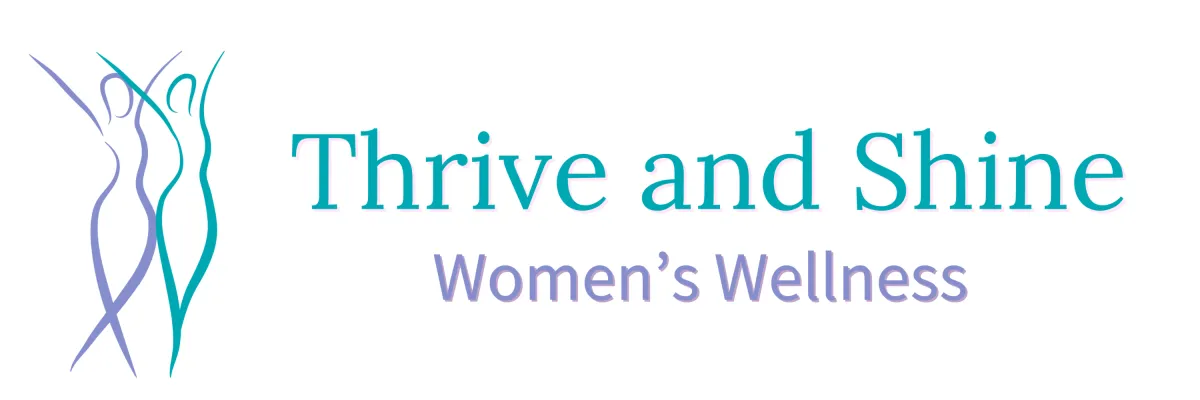

Free Resources
Free resources




Check out our blog for tips and advice about women's health.


Fibromyalgia Explained: Diagnosis, Overlapping Conditions, and What Helps
Fibromyalgia Explained: Diagnosis, Overlapping Conditions, and What Helps
By Roberta Bass, Women’s Health Physiotherapist
Thrive and Shine Women’s Wellness | Making Sense of Women’s Health Podcast
Fibromyalgia is one of those conditions that’s often misunderstood — or worse, dismissed entirely. It’s complex, exhausting, and deeply personal.
Many women experience a combination of pain, fatigue, brain fog, and sensitivity that doesn’t seem to “fit” into a neat diagnosis. Often, they’re left wondering: Is it fibromyalgia, or something else?
In this post, I’ll break down what fibromyalgia actually is, how it’s diagnosed, the conditions that often mimic or overlap with it, and the practical, evidence-informed ways you can support yourself.

What Is Fibromyalgia?
Fibromyalgia is a long-term, chronic condition thought to involve a dysfunction in how the nervous system processes pain. Essentially, the brain and spinal cord become more sensitive — turning up the “volume” on pain signals.
But fibromyalgia isn’t just about pain. Common symptoms include:
Widespread muscle and joint pain
Fatigue (even after rest)
Non-refreshing sleep
Brain fog or difficulty concentrating (“fibro fog”)
Sensitivity to touch, sound, light, or temperature
Headaches or migraines
Digestive symptoms, like bloating or IBS
Tender points in specific areas of the body
These symptoms vary in intensity and can fluctuate — making daily life unpredictable and emotionally draining.
Why Is Fibromyalgia So Hard to Diagnose?
There’s no single test for fibromyalgia. Diagnosis is usually based on symptoms, history, and by ruling out other possible causes.
A healthcare professional may consider fibromyalgia if:
Pain has lasted longer than 3 months
It affects multiple areas of the body
Symptoms include fatigue, poor sleep, and cognitive difficulties
Blood tests and scans for inflammation, thyroid, or nutrient deficiencies are normal
It’s often a diagnosis of exclusion, which means other conditions must be ruled out first — and this is where things can get tricky.
What Else Could It Be?
Before fibromyalgia is diagnosed, it’s important to explore other possible explanations for your symptoms. Many conditions share similar features:
🌀 Perimenopause
Hormonal fluctuations can cause joint pain, fatigue, mood changes, brain fog, and sleep disruption — all of which mirror fibromyalgia. If your symptoms fluctuate with your cycle or coincide with changes in your periods, hormones may be a factor.
🛏️ Chronic Fatigue Syndrome (CFS/ME)
Closely linked to fibromyalgia, CFS also causes fatigue, poor sleep, and brain fog. However, post-exertional malaise — a crash in energy after minimal activity — is more specific to CFS.
🔻 Hypothyroidism
An underactive thyroid can cause fatigue, weight gain, constipation, dry skin, and low mood. A simple blood test can check thyroid function and should always be part of the investigation.
⚡ Nutrient Deficiencies
Deficiencies in vitamin D, B12, or iron can cause fatigue, aches, neurological symptoms, and weakness. These are easily identified through blood tests and often improve with supplements.
🔥 Inflammatory Conditions
Rheumatoid arthritis, lupus, and other inflammatory conditions can cause joint pain and stiffness. Blood tests and imaging (like X-rays) may reveal inflammation that isn’t present in fibromyalgia.
😰 Anxiety and Depression
Mental health conditions can create physical symptoms like fatigue, concentration difficulties, or body tension — and may coexist with fibromyalgia. A holistic assessment is key.
🦠 Post-Viral Fatigue
After illnesses like glandular fever or COVID-19, some people experience lingering fatigue, pain, and brain fog. These symptoms may eventually resolve, but can initially look a lot like fibro.
Managing Fibromyalgia: What Can Help?
While there’s currently no cure for fibromyalgia, there are ways to manage it and feel more in control. What works varies from person to person, but here are some of the most helpful approaches:
🧘 Gentle Movement
Exercise can reduce pain, improve mood, and support function — but it must be paced. Walking, swimming, or Pilates can be excellent low-impact options. Start slowly and listen to your body.
😴 Sleep Support
Non-refreshing sleep is a key symptom. Sleep hygiene (regular routines, limiting screen time, winding down) makes a big difference. If sleep is a major struggle, it’s worth addressing this first — I have a dedicated podcast episode on improving sleep.
💆 Stress Reduction
Stress increases pain sensitivity and worsens symptoms. Strategies like breathwork, mindfulness, creative rest, journaling, and the CONTROL System (a subconscious mind approach I use) can help reduce mental overload.
🍲 Nutrition
An anti-inflammatory diet that includes plenty of whole foods, healthy fats, and colourful fruits and vegetables may reduce low-grade inflammation. Avoiding ultra-processed foods and tracking triggers can also help.
🕯️ Pacing
Avoid the “boom and bust” cycle. Learning how to manage your energy and activity levels helps prevent post-exertional crashes. Resting before you feel exhausted is key.
💊 Medication
Some people benefit from medications prescribed by their GP — often low-dose antidepressants or pain-modulating drugs to reduce nerve sensitivity. These may be used alongside lifestyle approaches.
You Are Not Alone — and You Deserve Support
Fibromyalgia can be incredibly isolating, especially when symptoms aren’t taken seriously. But support does exist.
If you’ve been diagnosed — or you’re experiencing symptoms that feel like fibromyalgia — I offer whole-body, personalised support through:
Women’s Health Physiotherapy
For musculoskeletal pain, pelvic health concerns, or tension contributing to symptoms.Pilates
Gentle movement that builds strength and mobility without overwhelming your system.CONTROL Sessions
A practical way to address subconscious stress patterns, improve sleep, and reduce pain perception — without the need for traditional hypnosis.
Let’s Work Together
You don’t have to figure this out alone. If you’re ready to feel more in control of your health, I’m here to help you move forward — at your pace, in a way that works for your body.
Whether you start with small daily shifts or a full package of support, every step you take matters.
👉 Explore support options across Physiotherapy, Pilates, and the CONTROL System at
www.thriveandshinewomenswellness.co.uk
Together, we’ll work at your pace — with compassion, clarity, and care.
If you are in the corporate world or run your own business then check out my free webinar
Elevating Business Success
5 key benefits of supporting women's health

Sign up for our newsletter.



